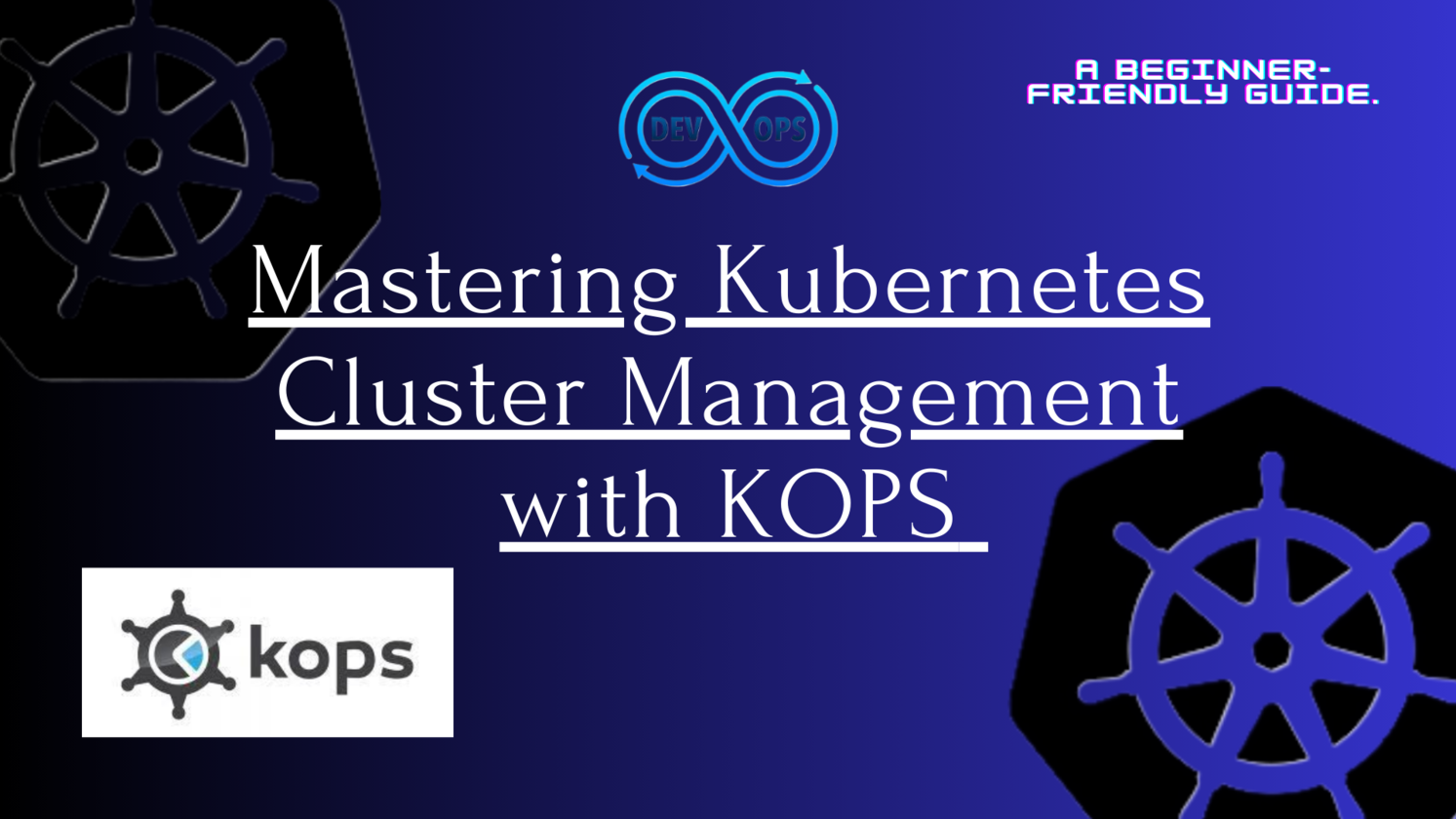Mastering Kubernetes Cluster Management with KOPS (Day-27)
 Rohit Deore
Rohit Deore
Introduction:
Welcome back to Day 27 of our DevOps journey! Today, we'll embark on a fascinating exploration of managing hundreds of Kubernetes clusters using the powerful tool called KOPS (Kubernetes Operations). We'll walk through popular Kubernetes distributions and dive into practical scenarios for efficiently managing large-scale Kubernetes environments. Get ready to elevate your Kubernetes management skills!
1. Popular Kubernetes Distributions:
a. Google Kubernetes Engine (GKE):
Ideal for users heavily invested in the Google Cloud Platform (GCP).
b. Amazon EKS (Elastic Kubernetes Service):
A fully managed Kubernetes service tailored for AWS environments.
c. Azure Kubernetes Service (AKS):
Microsoft's managed Kubernetes service integrated with Azure.
d. OpenShift:
Red Hat's enterprise-grade Kubernetes platform, offering additional features for robust container orchestration.
e. KOPS (Kubernetes Operations):
An open-source tool that helps you create, upgrade, and manage Kubernetes clusters on AWS.
f. Rancher:
A Kubernetes management platform that simplifies the deployment and management of Kubernetes clusters across different environments, providing a centralized control plane.
g. Tanzu:
VMware's portfolio of products and services for Kubernetes, offering solutions for building, running, and managing containerized applications.
h. DKE (Docker Kubernetes Service):
Docker's managed Kubernetes service, providing a simplified approach to deploying and managing Kubernetes clusters.
2. Manage Hundreds of Kubernetes Clusters with KOPS:
Now, let's focus on KOPS, a powerful tool that simplifies the process of managing multiple Kubernetes clusters.
a. Installation and Setup:
Start by installing KOPS on your local machine or a dedicated management server. You can follow the official installation guide here.
b. Cluster Creation:
With KOPS, creating a Kubernetes cluster is straightforward. Use the following example to create a cluster on AWS:
kops create cluster \
--name=my-cluster.k8s.local \
--state=s3://my-kops-state-store \
--zones=us-west-2a,us-west-2b,us-west-2c \
--node-count=3 \
--node-size=t2.micro \
--master-size=t2.micro
Adjust the parameters according to your requirements, specifying the cluster name, state store, availability zones, node count, and instance sizes.
c. Scaling Clusters:
As your workload grows, you may need to scale your clusters. KOPS simplifies this process. For example, to add two nodes to an existing cluster:
kops edit ig nodes --name=my-cluster.k8s.local
Then, under spec, increase the minSize and maxSize fields. After saving the changes, apply them:
kops update cluster my-cluster.k8s.local --yes
KOPS will automatically adjust the cluster size.
d. Updating Clusters:
Keeping your clusters up-to-date is crucial. Use KOPS to upgrade your clusters seamlessly. For example, to upgrade a cluster:
kops upgrade cluster --name=my-cluster.k8s.local --yes
kops update cluster my-cluster.k8s.local --yes
kops rolling-update cluster my-cluster.k8s.local --yes
Ensure to test upgrades in a staging environment before applying them to production clusters.
e. Monitoring and Logging:
Implementing effective monitoring and logging is essential for managing clusters at scale. Utilize tools like Prometheus and Grafana for monitoring, and Fluentd or Loki for logging.
f. Disaster Recovery:
Plan for disaster recovery by regularly backing up your cluster's state store. KOPS provides commands for backup and restore operations:
kops backup create my-cluster.k8s.local --yes
kops restore my-cluster.k8s.local --yes
In Closing:
Managing hundreds of Kubernetes clusters may seem daunting, but with tools like KOPS, it becomes a manageable task. By following the steps outlined in this guide, you can efficiently create, scale, update, and maintain your Kubernetes clusters. Remember to tailor these practices to your specific use case and always test changes in a controlled environment before applying them to production.
Keep Exploring...
Subscribe to my newsletter
Read articles from Rohit Deore directly inside your inbox. Subscribe to the newsletter, and don't miss out.
Written by

Rohit Deore
Rohit Deore
Student and Developer